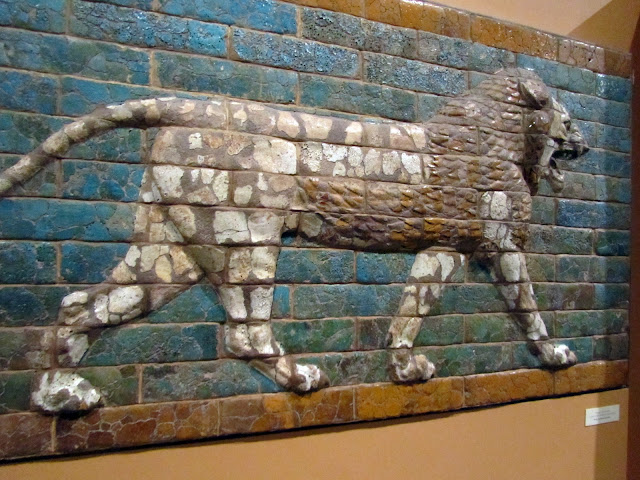We first visited The Smart Museum named after the family who published Esquire magazine. It contains artwork spanning five thousand years. Admission is free and it survives on donations and the generosity of several foundations.
The largest ink painting ever created by Bingyi covers the wall behind the stainless steel sculpture in the entrance of The Smart Museum. The sculpture is by Zahn Wang from China.
Our tour begins in the Contemporary Room with some works that make us ponder the meaning.
There were several of these enclosed dome collections of scientific materials sort of like visible time capsules.
Fiber Art Hangings
Dining Room Set (with post lights) designed by Frank Lloyd Wright
Four Arts Ball (1929)
Guy Pene Du Bois
There is artwork for every taste in this museum, contemporary, sculpture, furniture, baroque, religious, etc. The most stunning exhibition was The Tragic Muse of which I was not allowed to photograph, so please excuse the photos from the brochure.
The Tragic Actor (Rouviere as Hamlet) 1866 by Edouard Manet
This is a very large oil estimating about nine feet tall by five feet wide.
The Child's Grave (1857)
By Joshua Hargrave Sams Mann
The colors in this collection were magnificent so life like and well preserved through the centuries, many dating back to the 1500's.
After the Smart Museum we stopped for lunch at Cedars Mediterranean restaurant which began with pita bread and two different types of hummus, a ground garbanzo bean meatball and then a wonderful salad, rice, two vegetarian dishes, ground lamb with spices and lemon chicken. The dessert was a tasty rice pudding and baklava.
Now we were on to the Oriental Museum which is part of the University of Chicago's Archeology Department. It was founded in 1919 by James Henry Brested (supposedly the model for Indiana Jones) and partially funded by John D. Rockfeller housed in a beautiful art deco building completed in 1930. They have several digging sites throughout the middle east and continually send artifacts back to the university to be studied and processed.
The Striding Lions
On color glazed brick flanking the sides of the road leading out from the City of Babylon
One of a pair of carved stone bull heads. missing the horns, weighing ten tons, repaired after being shipped back to Chicago
The Man/Bull sat at the top of columns holding up the ceiling of a building in Iran - made of limestone
Sandals from 1600 BC, and we thought we invented flip flops!
A child's pull toy from 2300 BC
A thirty-two year old woman that they have done a CAT scan on (results were that she appeared healthy with two broken bones, no cause of death detected)
King Tut (there are small feet to the side which were thought to be part of the statue of his wife - you can see where her whole form had been broken off)
Part of two long walls leading into the King's palace, color has been worn away through the years
I had never been to this museum and certainly was not able to digest even a small portion of what it contains. Because the building and its decor takes you back to the art deco period, one feels like they are on the set of an Indiana Jones movie!
















